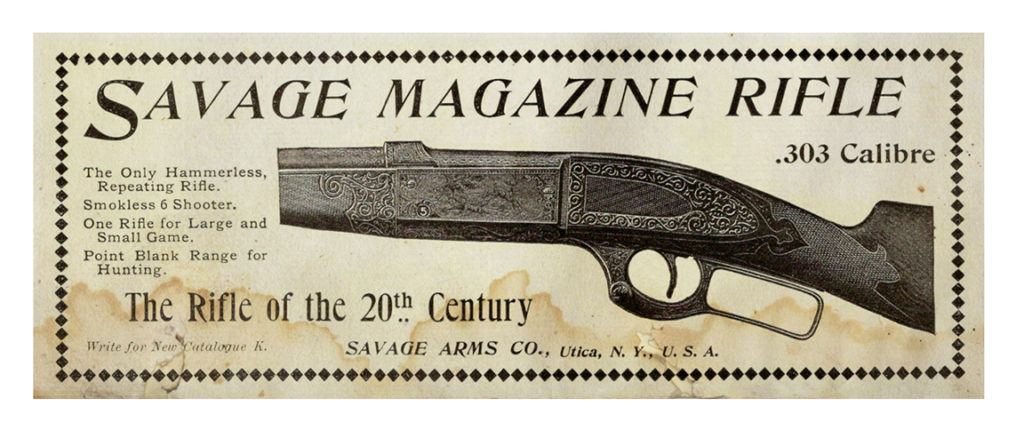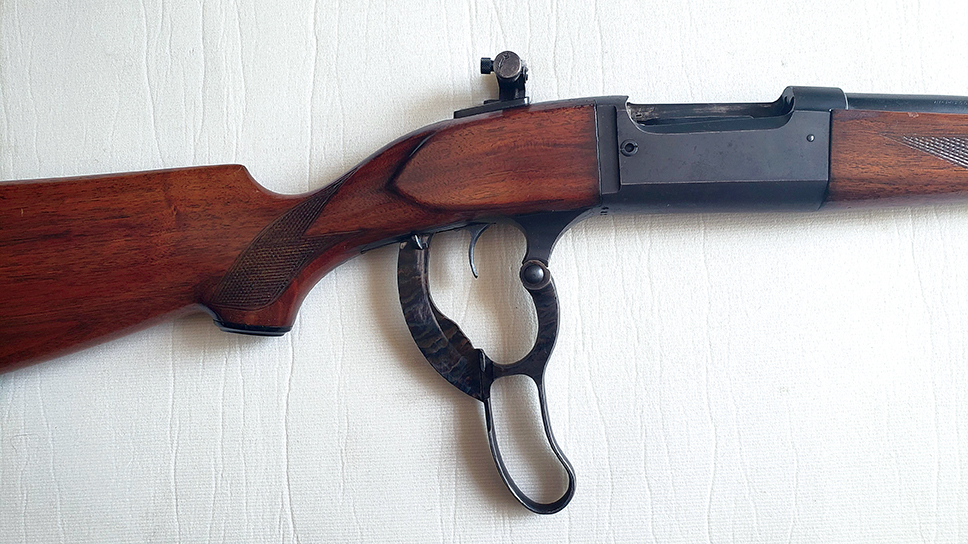The 1890s were truly an influential time in the history of firearms development, witnessing the introduction of everything from smokeless powder to semiautomatic shooting irons. The period also saw the debut of the hammerless lever-action rifle. On July 25, 1893, the U.S. Patent Office issued Patent No. 502,018, for a “magazine gun,” to Arthur William Savage. Born a British subject in Kingston, Jamaica, on May 19, 1857. Savage was an astute businessman, an ardent explorer and a multitalented inventor. In addition to his namesake lever-action rotary magazine rifle, Savage is known worldwide for another lasting invention—the radial tire, which remains the standard for virtually all automotive tires.

A family tradition
A.W., as he was known to friends and associates, started designing firearms with son John in the late 1880s. After receiving the patent for his hammerless lever-action rifle, Savage fished about for a factory space from which to begin production. His first rifle, the Model 1895, was manufactured under contract in New Haven, Conn., by the Marlin Repeating Arms Co., which rolled out 5,650 of them. The rifle came in its own caliber, .303 Savage, which was wholly different from the .303 British military cartridge but similar to the Winchester .30-30, though they weren’t interchangeable, and the .303 slightly surpassed the .30-30 in performance. Stamped at the Marlin factory with the initials JM (for company founder John Marlin), those early cartridges are extremely rare.
In 1894 A.W. organized the Savage Arms Co. in Utica, N.Y., which continued to produce the Model 1895 until the introduction of the Model 1899. The latter boasted many improvements over the earlier model and was made in the hundreds of thousands until discontinued in 1998. For a $5 fee Savage would convert an existing Model 1895 rifle or carbine to the Model 1899 configuration. The Model 99 featured not only a spring-loaded rotary spool magazine but also an indicator window on the left side of the receiver with a brass counter displaying the number of cartridges remaining in the magazine. It, too, initially used the .303 Savage cartridge, though after the turn of the century it was chambered for other calibers, including the perennial favorite .30-30 Winchester and the Winchester smokeless powder line (.25-35, .32-40, .38-55). Between 1912 and ’20 Savage produced cartridges by famed arms inventor Charles Newton in three additional calibers—the high-velocity .22 Savage Hi-Power (1912), the .250 Savage (1915) and the .300 Savage (1920). The last became the standard for the Savage 99.

OUt west and on safari
The Wild West era had begun to wind down by the time the Model 99 gained its spurs. The rifle initially came with a 26-inch round, octagon or half octagon barrel. The company later introduced a saddle ring carbine version with a 20-inch round barrel. The Savage proved stiff competition for the Winchester Models 1894 and 1895, though lawmen leaned toward the latter with their exposed hammers. That said, two period photographs show legendary Texas Ranger Frank Hamer (the man who tracked down Bonnie and Clyde) posing with a Model 99, most likely a .303 Savage carbine. Western hunters appreciated the rifle’s sturdy mechanics, though Winchesters continued to overshadow the Savage. In the 1972 Western Joe Kidd, which made use of many period-correct firearms, Robert Duvall’s character, scheming landowner Frank Harlan, carries an intricately engraved Savage 99.
Famed African hunter W.D.M. “Karamojo” Bell (1880–1954) is known to have used a Savage 99, chambered in .22 Savage Hi-Power, to down in quick succession 23 cape buffalo, a very dangerous animal when cornered. American explorer and adventurer Roy Chapman Andrews (1884–1960), whose exploits may have inspired the film character Indiana Jones, and missionary and fellow explorer the Rev. Harry R. Caldwell (1876–1970), author of Blue Tiger (1924), hunted tigers in South China, both using the Model 99 chambered in .22 Savage Hi-Power. In company brochures Savage particularly played up hunting stories and photos from Caldwell. In later writings Andrews expressed his preference for the .250 Savage. By then A.W. Savage had long since moved west to pursue other ventures. On Sept. 22, 1938, he died at age 81 in San Diego, Calif.
The ones that got away
In 1967 I went down to Sonora, Mexico, with Hal Varney, a regular customer at my father’s hobby shop in Connecticut, to purchase five Whitney-Kennedy lever-action rifles from a Mexican gentleman who also had two .303 Savage saddle ring carbines. Each of the latter bore a number on the left side of the receiver and were said to have been owned by rurales, the federal mounted police. No, we didn’t buy the pair, a decision I came to regret. Collector Rudolfo Mendez told us the Savage 99 was popular with lawmen and bandidos alike in Mexico in the 1910–’20s and could use spitzer rounds (pointed, jacketed bullets), as the nose of a following cartridge did not rest on the primer of the one before it, as occurs in rifles with tube magazines, like the Winchester 1894. The Winchester Model 1895 could use pointed projectiles in its single-stack box magazine, but working the action proved too noisy for covert police work. The Savage 99, on the other hand, had sleek, smooth and largely silent mechanics.
The Savage Model 99 wove an adventurous history, making its mark with Rangers in Texas, rurales in Mexico and tiger hunters in China. At the turn of the 19th century Savage led the lever-action pack in innovation and performance, and for the rest of the century the Model 99 remained among the world’s most popular hunting rifles. WW






